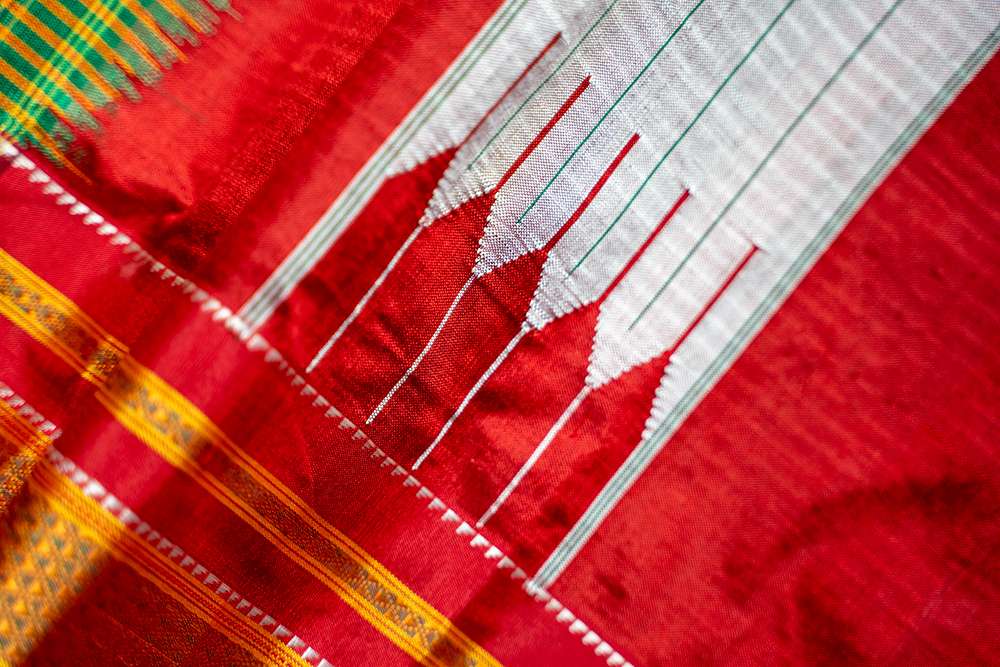Introduction
Among India’s treasure trove of handloom traditions, Ilkal Sarees stand out as a beautiful fusion of history, craftsmanship, and regional identity. Originating from the town of Ilkal in the Bagalkot district of Karnataka, these sarees are not just garments but a reflection of Karnataka’s rich cultural fabric.
Rooted in heritage and worn with pride, Ilkal sarees are gaining renewed attention for their elegance, vibrant colors, and intricate weaves.
History of Ilkal Sarees
Ilkal saree weaving dates back to the 8th century, with references found during the Chalukya dynasty. Originally woven for royalty and temple dancers, these sarees were symbols of prestige and tradition.
The town of Ilkal became a major center for handloom weaving, with families passing down the skill for generations. Even today, walking through Ilkal’s narrow streets, one can hear the rhythmic clatter of traditional pit looms in action.
Unique Features of Ilkal Sarees
-
Distinctive Weaving Technique:
-
The most striking feature of Ilkal sarees is the “Tope Teni” technique, where the body and pallu are woven separately and later joined with a unique locking method — not stitched, but woven together.
-
-
Traditional Borders (Gomi):
-
The sarees are known for their bold red borders with white or gold zari stripes. These temple-inspired designs are rooted in Kannada aesthetics.
-
-
The Pallu (Saree End):
-
The pallu typically features broad red color with white motifs, often resembling temple towers or geometric shapes — iconic and instantly recognizable.
-
-
Fabrics:
-
Ilkal sarees are traditionally woven in cotton, silk-cotton, or pure silk. Cotton Ilkals are preferred for daily wear, while silk versions are chosen for weddings and festivals.
-
-
Motifs:
-
Classic motifs include Kamala (lotus), Rudraksha, Palavanchi (palanquin), and Hanige (comb pattern)— each with symbolic significance.
-
Why Ilkal Sarees Are Special
-
🌾 Handloom Heritage: Every saree is woven by skilled artisans who follow age-old techniques without modern machines.
-
🎨 Vibrant Colors: Ilkal sarees are celebrated for their earthy tones — deep red, maroon, indigo, mustard, and peacock green are common.
-
👑 Cultural Symbol: Worn during festivals, weddings, and rituals in North Karnataka, they hold a place of pride in Kannada culture.
-
🧵 Versatile Wear: Suitable for both traditional occasions and contemporary styling.
Revival and Recognition
In recent years, Ilkal sarees have experienced a revival due to increased awareness about sustainable fashion and interest in regional crafts. Many young designers and entrepreneurs are working with weavers to innovate and market Ilkals to a global audience.
Ilkal Sarees have also earned Geographical Indication (GI) status, helping protect and promote their authenticity.
Ilkal vs Molkalmuru Sarees
While both are traditional sarees of Karnataka, they differ in style and origin:
| Feature | Ilkal Saree | Molkalmuru Saree |
|---|---|---|
| Origin | Ilkal, Bagalkot District | Molkalmuru, Chitradurga District |
| Fabric | Cotton, Silk-cotton, Pure Silk | Mostly Pure Silk |
| Signature Elements | Tope Teni join, bold temple border | Intricate zari work and soft texture |
| Style | Earthy and rustic elegance | Royal and festive grandeur |
Conclusion: Drape the Legacy
Ilkal sarees are more than garments — they are a celebration of Karnataka’s weaving heritage, a source of livelihood for local artisans, and a timeless choice for women who embrace culture with style.
Whether you’re wearing it for a function, gifting it to someone special, or simply supporting Indian handlooms, an Ilkal saree lets you drape a story of elegance and tradition.

